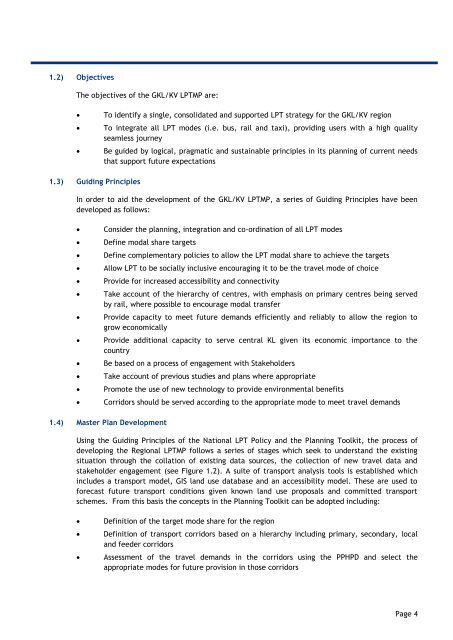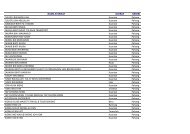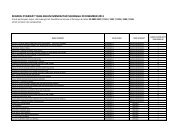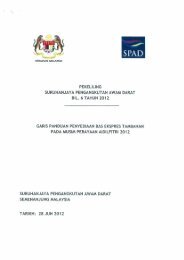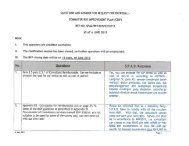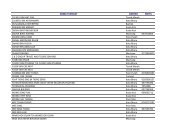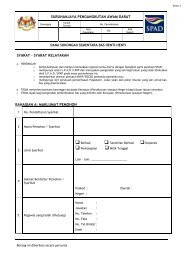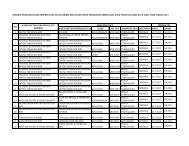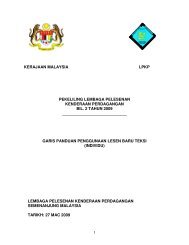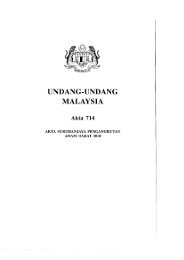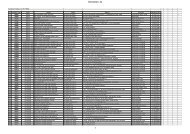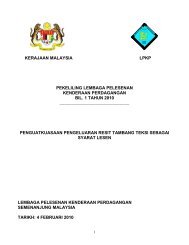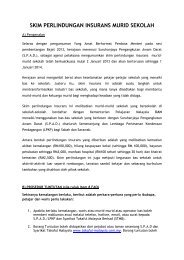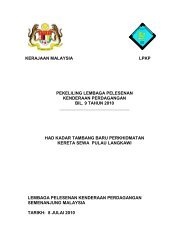4. Developing the Taxi Transformation Plan - SPAD
4. Developing the Taxi Transformation Plan - SPAD
4. Developing the Taxi Transformation Plan - SPAD
Create successful ePaper yourself
Turn your PDF publications into a flip-book with our unique Google optimized e-Paper software.
1.2) Objectives<br />
The objectives of <strong>the</strong> GKL/KV LPTMP are:<br />
<br />
<br />
<br />
To identify a single, consolidated and supported LPT strategy for <strong>the</strong> GKL/KV region<br />
To integrate all LPT modes (i.e. bus, rail and taxi), providing users with a high quality<br />
seamless journey<br />
Be guided by logical, pragmatic and sustainable principles in its planning of current needs<br />
that support future expectations<br />
1.3) Guiding Principles<br />
In order to aid <strong>the</strong> development of <strong>the</strong> GKL/KV LPTMP, a series of Guiding Principles have been<br />
developed as follows:<br />
<br />
<br />
<br />
<br />
<br />
<br />
<br />
<br />
<br />
<br />
<br />
<br />
Consider <strong>the</strong> planning, integration and co-ordination of all LPT modes<br />
Define modal share targets<br />
Define complementary policies to allow <strong>the</strong> LPT modal share to achieve <strong>the</strong> targets<br />
Allow LPT to be socially inclusive encouraging it to be <strong>the</strong> travel mode of choice<br />
Provide for increased accessibility and connectivity<br />
Take account of <strong>the</strong> hierarchy of centres, with emphasis on primary centres being served<br />
by rail, where possible to encourage modal transfer<br />
Provide capacity to meet future demands efficiently and reliably to allow <strong>the</strong> region to<br />
grow economically<br />
Provide additional capacity to serve central KL given its economic importance to <strong>the</strong><br />
country<br />
Be based on a process of engagement with Stakeholders<br />
Take account of previous studies and plans where appropriate<br />
Promote <strong>the</strong> use of new technology to provide environmental benefits<br />
Corridors should be served according to <strong>the</strong> appropriate mode to meet travel demands<br />
1.4) Master <strong>Plan</strong> Development<br />
Using <strong>the</strong> Guiding Principles of <strong>the</strong> National LPT Policy and <strong>the</strong> <strong>Plan</strong>ning Toolkit, <strong>the</strong> process of<br />
developing <strong>the</strong> Regional LPTMP follows a series of stages which seek to understand <strong>the</strong> existing<br />
situation through <strong>the</strong> collation of existing data sources, <strong>the</strong> collection of new travel data and<br />
stakeholder engagement (see Figure 1.2). A suite of transport analysis tools is established which<br />
includes a transport model, GIS land use database and an accessibility model. These are used to<br />
forecast future transport conditions given known land use proposals and committed transport<br />
schemes. From this basis <strong>the</strong> concepts in <strong>the</strong> <strong>Plan</strong>ning Toolkit can be adopted including:<br />
<br />
<br />
<br />
Definition of <strong>the</strong> target mode share for <strong>the</strong> region<br />
Definition of transport corridors based on a hierarchy including primary, secondary, local<br />
and feeder corridors<br />
Assessment of <strong>the</strong> travel demands in <strong>the</strong> corridors using <strong>the</strong> PPHPD and select <strong>the</strong><br />
appropriate modes for future provision in those corridors<br />
Page 4


